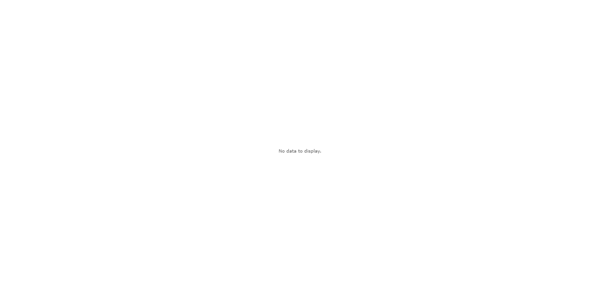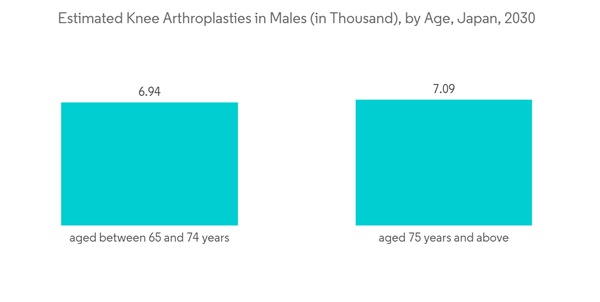The Japan diagnostic imaging equipment market is expected to register a CAGR of 6.9% over the forecast period.
The COVID-19 outbreak significantly impacted Japan’s healthcare industry as the country lacked beds to accommodate COVID-19 patients. For instance, in May 2021, a research study published by National Center for Biotechnology Infomation (NCBI) stated that diagnostic imaging methods are assuming a greater role in the workup of patients with COVID-19, mainly concerning the primary manifestation of pulmonary disease and the tissue distribution of the angiotensin-converting enzyme 2 (ACE 2) receptor. The COVID-19 pandemic provided opportunities to expand its capabilities into different geographies and diversify its business. For instance, the article published in July 2021 by the National Center for Biotechnology Infomation (NCBI), stated that Japan's first report on SARS-CoV-2-associated meningitis/encephalitis, stated high signal intensity in the mesial temporal lobe and a brain MRI showed hyperintensity along the wall of right lateral ventricle and hyperintense signal changes in the right mesial temporal lobe and hippocampus, suggesting the possibility of SARS-CoV-2 meningitis.
Further, the rising burden of chronic diseases, technological advancements in imaging equi,pmentthe and the increasing geriatric population in Japan are among the major factors driving the growth of the studied market. For instance, in 2021, as per the Statistics Bureau of Japan, the total population of Japan was around 125.50 million among which the aged population (65 years old and over) was 36.21 million, which constituted around 28.9 percent of the total population which is 1 in every 4 persons.
In addition, according to the International Diabetes Federation (IDF), in 2021, there were around 11 million cases of diabetes in Japan, which increased by 8% as compared to the past years. The rising cases of diabetes are elevating the need for more diagnosers to t patients who have diabetes through the use of various diagnostic imaging equipment, hence this is elevating the market although thought the market is anticipated to witness growth over the analysis of the period, the high cost of equipment and procedures and concerns among the population regarding the side effects of radiation is likely to impede the market growth.
According to the 2022 statistics published by Ganjoho, about 378,600 new cancer cases (218,900 cases in males and 159,700 cases in females) were reported in Japan in 2021. In addition, as per the same source, lung cancer was the leading site (24%) for males, followed by rectum/colon cancer (13%), stomach cancer (12%), pancreas (8%), and liver cancer (7%). Thus, the high burden of cancer among the population raises the need for early diagnosis which in turn is anticipated to fuel the demand for imaging tests such as CT scans, MRIs, and others, hence propelling the segment's growth.
Moreover, product launches and technological advancements by major players are also fueling the market growth. For instance, in December 2021, the company Canon Medical announced integration with Spectronic Medical’s MRI Planner software to strengthen its presence in the field of radiotherapy planning.
The nuclear imaging segment is expected to hold a significant share of the market over the forecast period owing to the factors such as the increasing burden of chronic diseases such as orthopedic disorders, neurological disorders, and others as well as the growing technological advancements. For instance, according to an article published in the Journal of Orthopaedic Science, in September 2021, about 7092 knee arthroplasties are expected to be performed on women between the ages of 40 and 64 years, 22,957 on women between the ages of 65 and 74 years, and 58,340 on women over 75 years in Japan by 2030. Thus, it indicates that the number of hip and knee surgeries among the population is expected to increase which in turn fuels the demand for nuclear imaging equipment in the country.
Furthermore, the growing technologically advanced products by the companies raise their adoption in treating people suffering from chronic diseases, hence contributing to the segment growth. For instance, in March 2021, Kyoto Japan, Shimadzu Corporation launched a new BresTome TOF-PET functional imaging system intended for the head and breast, in Japan. The imaging system offers a double resolution of common whole-body PET systems.
Therefore, owing to the aforementioned factors, the studied segment is anticipated to grow over the forecast period.
This product will be delivered within 2 business days.
The COVID-19 outbreak significantly impacted Japan’s healthcare industry as the country lacked beds to accommodate COVID-19 patients. For instance, in May 2021, a research study published by National Center for Biotechnology Infomation (NCBI) stated that diagnostic imaging methods are assuming a greater role in the workup of patients with COVID-19, mainly concerning the primary manifestation of pulmonary disease and the tissue distribution of the angiotensin-converting enzyme 2 (ACE 2) receptor. The COVID-19 pandemic provided opportunities to expand its capabilities into different geographies and diversify its business. For instance, the article published in July 2021 by the National Center for Biotechnology Infomation (NCBI), stated that Japan's first report on SARS-CoV-2-associated meningitis/encephalitis, stated high signal intensity in the mesial temporal lobe and a brain MRI showed hyperintensity along the wall of right lateral ventricle and hyperintense signal changes in the right mesial temporal lobe and hippocampus, suggesting the possibility of SARS-CoV-2 meningitis.
Further, the rising burden of chronic diseases, technological advancements in imaging equi,pmentthe and the increasing geriatric population in Japan are among the major factors driving the growth of the studied market. For instance, in 2021, as per the Statistics Bureau of Japan, the total population of Japan was around 125.50 million among which the aged population (65 years old and over) was 36.21 million, which constituted around 28.9 percent of the total population which is 1 in every 4 persons.
In addition, according to the International Diabetes Federation (IDF), in 2021, there were around 11 million cases of diabetes in Japan, which increased by 8% as compared to the past years. The rising cases of diabetes are elevating the need for more diagnosers to t patients who have diabetes through the use of various diagnostic imaging equipment, hence this is elevating the market although thought the market is anticipated to witness growth over the analysis of the period, the high cost of equipment and procedures and concerns among the population regarding the side effects of radiation is likely to impede the market growth.
Japan Diagnostic Imaging Equipment Market Trends
Oncology Segment is Expected to Witness Significant Growth Over the Forecast Period
Oncology is defined as diagnosing and treating tumors and cancers. Oncology is one of the leading causes of morbidity and mortality. Therefore, the need for imaging in the diagnosis of cancer is high within the region, as it is used to detect tumors and other abnormalities as well as determine the extent of the disease, and evaluate the effectiveness of treatment. The incidence of cancer cases within the region is elevating the growth of the oncology segment.According to the 2022 statistics published by Ganjoho, about 378,600 new cancer cases (218,900 cases in males and 159,700 cases in females) were reported in Japan in 2021. In addition, as per the same source, lung cancer was the leading site (24%) for males, followed by rectum/colon cancer (13%), stomach cancer (12%), pancreas (8%), and liver cancer (7%). Thus, the high burden of cancer among the population raises the need for early diagnosis which in turn is anticipated to fuel the demand for imaging tests such as CT scans, MRIs, and others, hence propelling the segment's growth.
Moreover, product launches and technological advancements by major players are also fueling the market growth. For instance, in December 2021, the company Canon Medical announced integration with Spectronic Medical’s MRI Planner software to strengthen its presence in the field of radiotherapy planning.
Nuclear Imaging Equipment Segment is Expected to Have the Significant Market Share Over the Forecast Period
Nuclear imaging is used in the diagnosis of diseases by using small amounts of radioactive substances in patients and is used in a wide range of medical applications including cardiology, obstetrics/gynecology, vascular, urology, and other medical applications.The nuclear imaging segment is expected to hold a significant share of the market over the forecast period owing to the factors such as the increasing burden of chronic diseases such as orthopedic disorders, neurological disorders, and others as well as the growing technological advancements. For instance, according to an article published in the Journal of Orthopaedic Science, in September 2021, about 7092 knee arthroplasties are expected to be performed on women between the ages of 40 and 64 years, 22,957 on women between the ages of 65 and 74 years, and 58,340 on women over 75 years in Japan by 2030. Thus, it indicates that the number of hip and knee surgeries among the population is expected to increase which in turn fuels the demand for nuclear imaging equipment in the country.
Furthermore, the growing technologically advanced products by the companies raise their adoption in treating people suffering from chronic diseases, hence contributing to the segment growth. For instance, in March 2021, Kyoto Japan, Shimadzu Corporation launched a new BresTome TOF-PET functional imaging system intended for the head and breast, in Japan. The imaging system offers a double resolution of common whole-body PET systems.
Therefore, owing to the aforementioned factors, the studied segment is anticipated to grow over the forecast period.
Japan Diagnostic Imaging Equipment Industry Overview
The Japanese diagnostic imaging equipment market is consolidated in nature due to the presence of fewer companies operating globally as well as regionally. The competitive landscape includes an analysis of a few international and local companies that hold market shares and are well-known, such as Canon Medical Systems Corporation, Carestream Health Inc., Esaote SpA, Fujifilm Holdings, GE Healthcare, Hologic Inc., Philips Healthcare, Shimadzu Corporation, and Siemens Healthcare.Additional Benefits:
- The market estimate (ME) sheet in Excel format
- 3 months of analyst support
This product will be delivered within 2 business days.
Table of Contents
1 INTRODUCTION
4 MARKET DYNAMICS
5 MARKET SEGMENTATION (Market Size by Value - USD million)
6 COMPETITIVE LANDSCAPE
Companies Mentioned (Partial List)
A selection of companies mentioned in this report includes, but is not limited to:
- Canon Medical Systems Corporation
- Carestream Health Inc.
- Esaote SpA
- Fujifilm Holdings
- GE Healthcare
- Hologic Inc.
- Koninklijke Philips N.V.
- Shimadzu Corporation
- Siemens Healthcare
- YOSHIDA DENZAI KOGYO CO.,LTD.
Methodology

LOADING...










